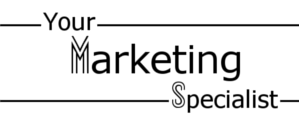Don’t be confused about marketing jargon, here’s a simple explanation of some common marketing terms
A
Android
There are two main types of smart phone these days, the iPhone from Apple with an IOS operating system and those running an android operating system, commonly referred to an Android phone. There is also a third type of phone you may have heard of called BlackBerry, these phones also have their own operating system.
App
App is short for application, Microsoft Word is an application on your desktop computer. However ‘app’ is more commonly used in reference to an application on a smart phone or tablet. For example you probably check Facebook on your mobile phone via a Facebook app. This makes it easier and quicker to access your newsfeed and receive notifications from the app without having to visit the Facebook website in your web browser.
B
Browser
When you access the internet you will use a browser, this is the generic word for applications like Internet Explorer, Google Chrome, Bing, Mozilla Firefox and Safari.
C
C is for
D
Domain Name
A domain name is your unique web address, it’s the url that your website sits on, it’s the bit that comes after the www. (although these days it’s not necessary to use www. most websites work without it.)
E
E is for
F
F is for
G
G is for
H
H is for
I
I is for
J
J is for
K
K is for
L
L is for
M
Mobile Responsive Design
Mobile Responsive Design is the term used to describe websites that automatically resize when they are viewed on a mobile device.
N
N is for
O
O is for
P
P is for
Q
Q is for
R
Responsive Design
Responsive Design automatically resizes website content to fit screen size and orientation the visitor is using whether it’s a desktop monitor, laptop, tablet or smart phone.
S
SEO
SEO stands for Search Engine Optimisation. The most commonly known search engines are Google and Bing, they are often the default home page when you open your web browser. The art of getting your website to show up in the search results on these pages is called search engine optimisation. This was typically done by optimising thee use of keywords and phrases on your web pages so that these pages 'rank' or display in the results lists when those words are searched for. Although today there are many more contributing factors than just keywords when it comes to optimising your website for search.
T
T is for
U
URL?
URL stands for Uniform Resource Locator, it is the address reference of a resource (i.e. a web page) on the internet. Every page on your website will have its own unique url, usually identified by a forward slash after your domain e.g www.domainname.com/pagename.
V
V is for
W
WordPress
WordPress is free website software that you can use to create your own website without knowing any coding languages. WordPress provides the functional tools to create web pages and blog posts, it is a content management system for publishing content on the web. You can use WordPress Themes to customise the design of your site, and add features or functionality with WordPress Plugins. WordPress was created by a community of volunteers and is what is known as ‘open source’ with developers from all over the world contributing to its upkeep and supporting over 60 million WordPress users. WordPress is continually being improved and users are kept up to date with regular updated releases. Current version is 4.4 (December 2015). Find out more about WordPress at wordpress.org.
X
X is for
Y
Y is for
Z
Z is for
